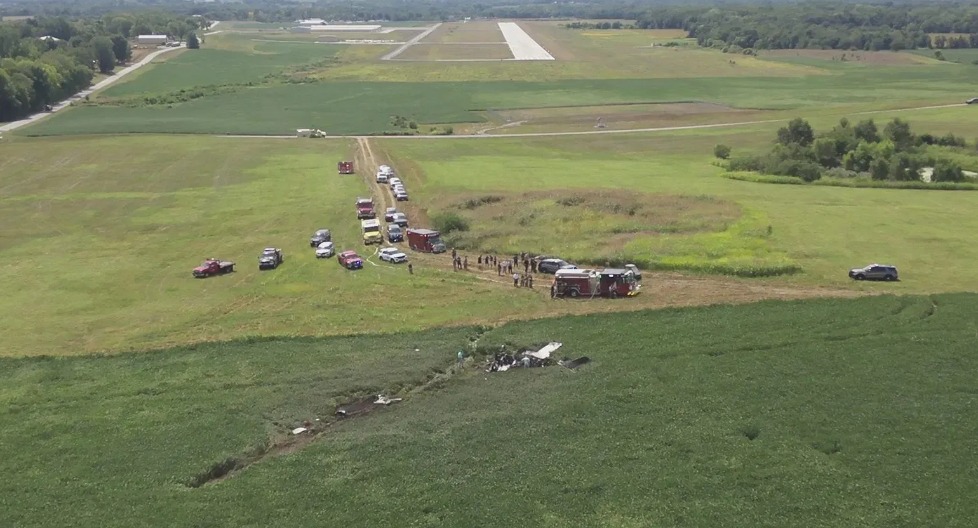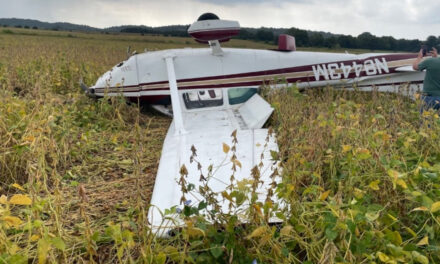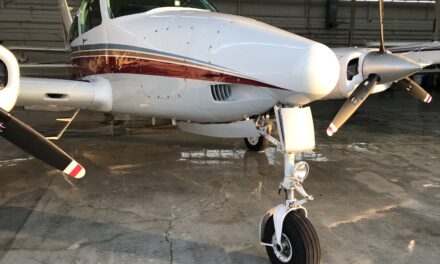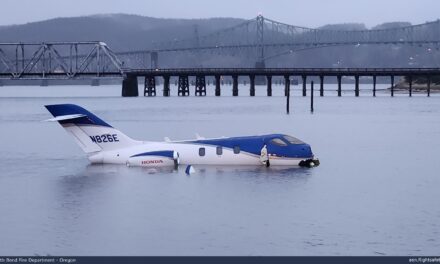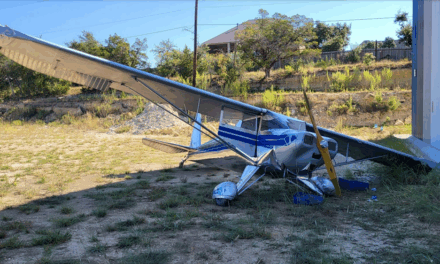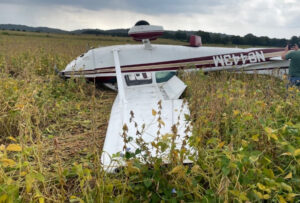On August 27, 2025, at 11:57 local time, the Cessna 340 N888MT fatal crash near Mosby, Missouri shocked local aviators and safety analysts alike. Operated by Spelts Mark Warren Trustree, the twin-engine aircraft impacted terrain on approach to Midwest National Air Center (KGPH), killing both aboard. That tragic moment rewrote the plans of two experienced pilots, and triggered a deep investigation into what led a normally capable aircraft to fail so catastrophically. (Bureau of Aircraft Accidents Archives) Crash report summary
Flight Plan & Approach Into Mosby
N888MT departed Washington Regional Airport (KFYG) about 10:58 LT, bound for Midwest National Air Center near Mosby, Missouri. It climbed to an en route altitude of 4,500 feet and maintained normal cruise until nearing the destination. (Preliminary Report) Sheriff Clay Co. investigation
About 25 miles from Mosby, the aircraft completed a descent and began to enter the traffic pattern via a left base turn toward runway 18. ADS-B data showed the altitude was lower than typical pattern altitude. (Prelim. Report) The preliminary report notes “the airplane’s altitude was lower than normal for a standard traffic pattern and continued to descend.” (KCTV5) Local news summary
Witnesses near the field described seeing the aircraft wing dip, then level, then dip again before rolling sharply to the left—and then striking the ground. (KSHB report) KSHB coverage
Final Moments & Wreckage Findings
Investigators located the crash site in an uncultivated soybean field about 0.6 miles from the runway threshold. The aircraft was largely consumed by post-impact fire. (Prelim. Report) Sheriff Clay Co. report
The debris field extended ~95 feet from initial wing-nose impact points. Right engine propeller separated at the crankshaft and lay in a divot. Flight control continuity was confirmed from cockpit to control surfaces, though electronics were heavily damaged. Investigators found the landing gear down and flaps retracted. (Prelim. Report)
Aircraft Background & Pilot Context
The Cessna 340 is a pressurized light twin introduced in the 1970s, valued for its speed and versatility in personal and business transport. Owners appreciate its speed, cabin comfort, and payload capabilities.
N888MT, specifically, had been outfitted with RAM VI conversion modifications, enhancing its performance. The operator, Spelts Mark Warren Trustree, had flown it privately—this mission was consistent with prior personal operations. (Crash archives) Spagnoletti law summary
Both occupants, Mark and Vickie Spelts, were identified by local media. (KMBC) KMBC news summary Their flight and aircraft history is under intense review.
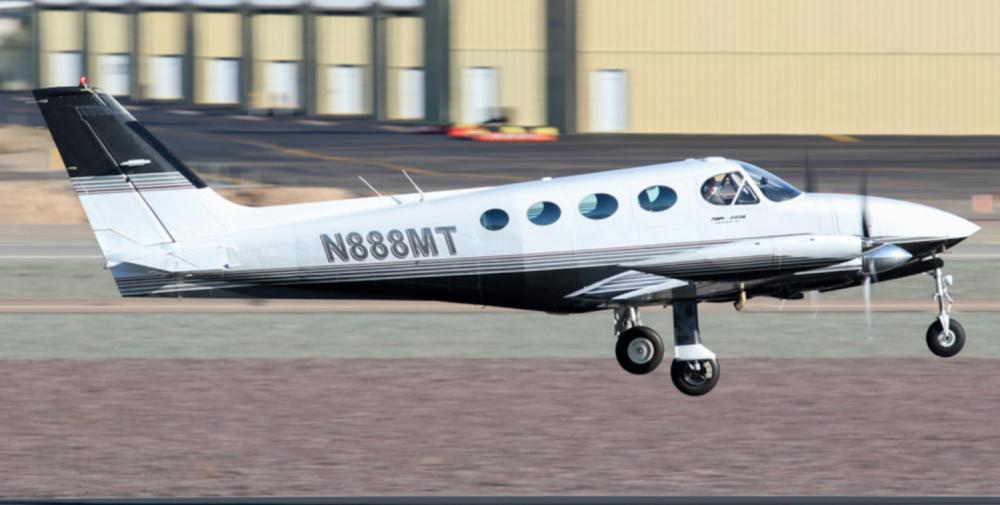
Contributing Factors & Hypotheses
Though the final NTSB probable cause is not issued, the preliminary record suggests several possible factors:
- Low pattern altitude: Entering the base turn significantly lower than standard may have reduced margin for correction.
- Loss of lift or stall entry: The wing dip seen by witnesses suggests aerodynamic stall or loss of roll control.
- Unstable approach geometry: Early descent, wing fluctuations, and roll departures in a twin can quickly lead to loss of control.
- Environmental and human factors: On that day, skies were clear, visibility was good, and winds light (~5 knots). The contributing factor seems less weather than precision and margin. (Prelim. Report)
- Post-impact fire complicates mechanical tracing**: The heavy fire destroyed most electronics and instrumentation, limiting forensic analysis.
This incident bears similarity to accidents where aircraft enter traffic pattern too low and lack altitude buffer to recover. In twin operations, asymmetric drag or power changes low and slow carry high risk.
Industry & Community Reaction
Local news described shock and mourning in Clay County and surrounding communities. The crash happened in rural farmland, drawing first responders and FAA teams quickly. (Spagnoletti)
In general aviation circles, the accident sparked conversations about traffic pattern discipline, especially for aging pilots or in sparsely controlled airports. Many urged reinforcing procedures: never enter too low, always maintain extra safety altitude until properly established.
Lessons & Recommendations
From this tragedy, multiple preventive measures stand out:
- Ensure pattern entry altitudes are strictly followed—never shortcut descent inside pattern.
- Use stabilized approach criteria: if you’re not stable by a reference point, go around early.
- Conduct recency and scenario training, especially for complex twins, covering stalls, power loss, and pattern errors.
- Equip aging twins with angle-of-attack indicators or stall warning enhancement to give pilots better cues.
- Emphasize post-accident data recording upgrades—even small retrofit recorders or ADS-B logs can help reconstruction.
- Promote increased FAA / NTSB outreach to GA operators about pattern safety and margin buffers.
Broader Perspective & Reflection
The Cessna 340 N888MT fatal crash near Mosby is a stark reminder that even skilled pilots and capable aircraft can succumb to small misalignments in judgment and margin. The wings that dipped, rolled, and struck ground illustrate how rapidly control can degrade in the approach environment.
As the GA fleet ages and more pilots fly into retirement, decision-making under pressure becomes a focal point. Even with advanced systems, safety remains grounded in pilot discipline, altitude buffer, and conservative judgment.
If pattern altitude discipline is so critical, should FAA revisit standard traffic pattern standards or mandate stricter minimum altitudes in general aviation to reduce loss-of-control accidents?

